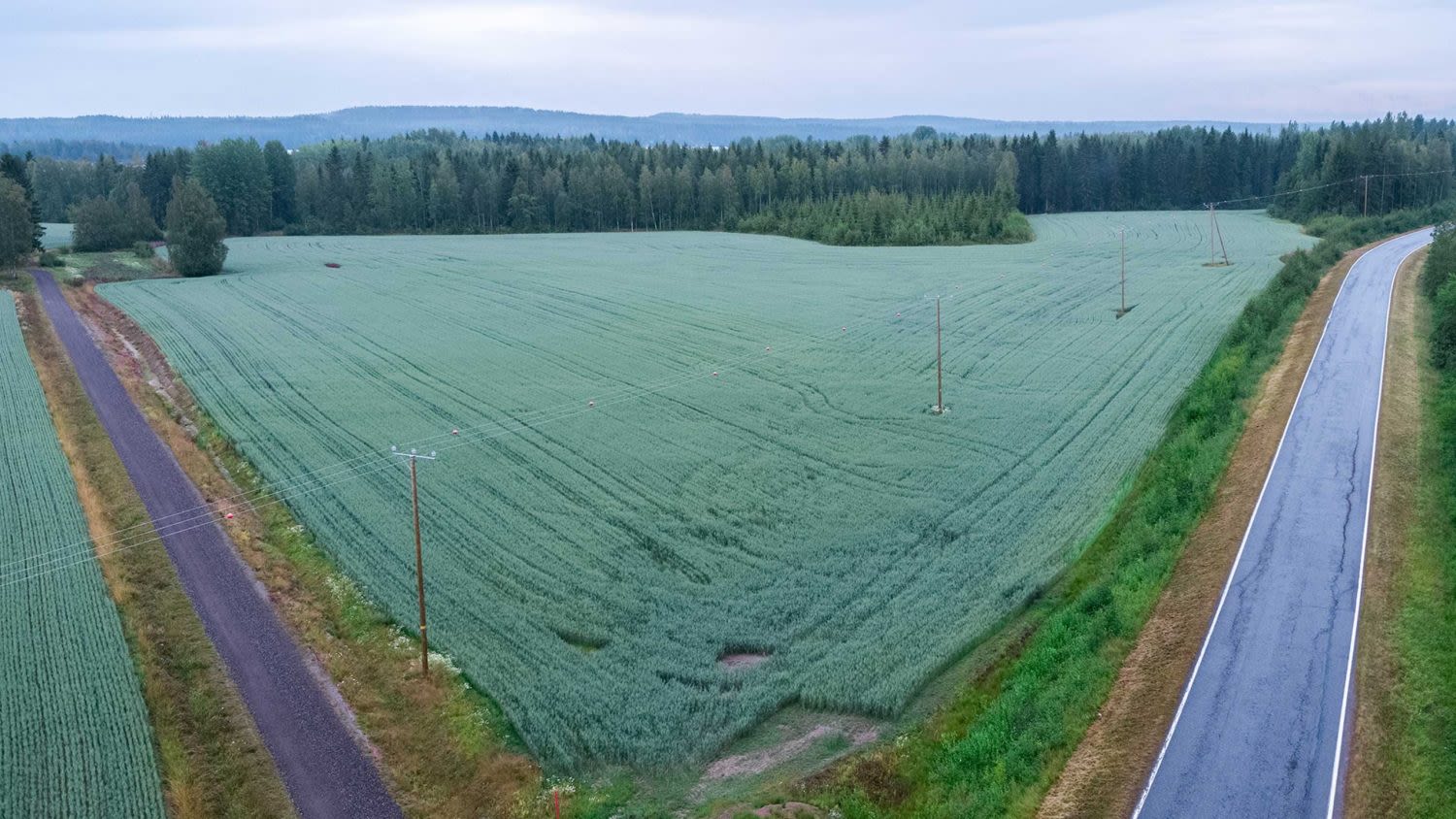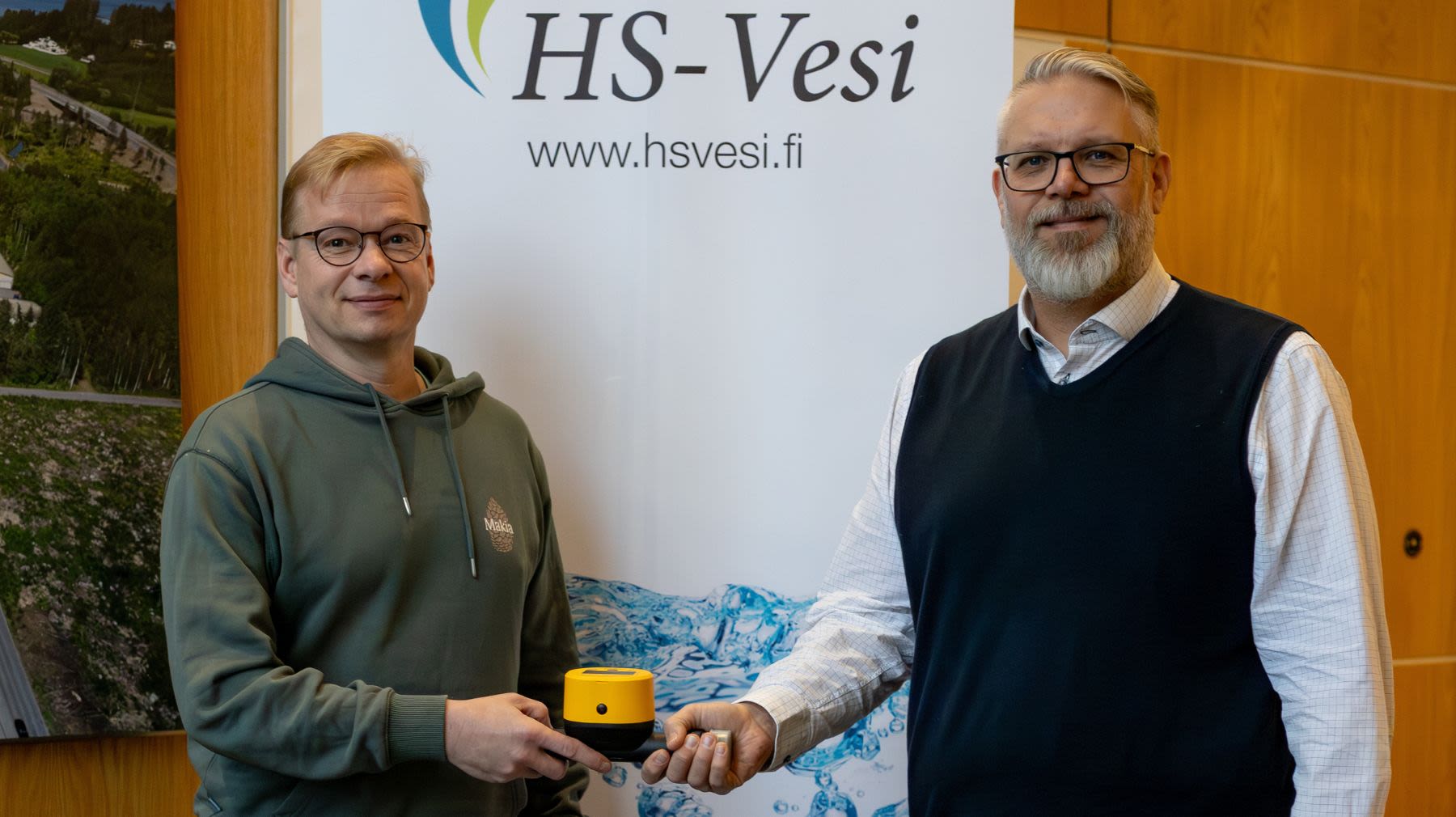The Kainuu-based Loiste Group has found that NB-IoT technology solves the problem of remotely reading electricity meters in sparsely populated areas. In addition to the power company, smart technology helps both the seller and the customer.
Photos: Kajave Oy
Only a short time ago, Kajave Oy, a member of the Loiste Group had a problem. Kainuu is a large area, and reading electricity meters remotely was not really working.
”In Kainuu, the GPRS network used by our electricity meters has a lot of dead zones. This was making it difficult to read our approximately 8,000 electricity meters remotely,” says Metering Manager Jari Rusanen, describing the problem.
Elisa offered a functional solution. In cooperation with Elisa, Loiste Energia, which specialises in the Group’s energy services, started modernising its meter network. The latest generation of electricity meters utilises Narrowband IoT, a 5G technology designed for the Internet of Things. It has good penetration and extensive coverage, while consuming little energy and allowing long battery life and low costs.
Narrowband IoT is also compatible with the existing 4G network. Elisa’s NB-IoT network covers practically the whole country.
A tester shows where NB-IoT works
“We began the renewal by identifying the sites where electricity meters could not be read remotely over the mobile network at all. The NB-IoT meters worked very well even there,” Rusanen says.
To assist in mapping Loiste Energia’s area of operation, Rusanen used an NB-IoT tester acquired from Elisa. It uses a test connection to show how strong the coverage of the NB-IoT network in the area is. ”If an additional external aerial is needed for the building, the tester can be used to find the optimal location for it,” says Keijo Hyvärinen, Senior Development Manager at Elisa.
In the current situation, the tester is an important tool. As the Electricity Market Act is being amended and the requirements for electricity metering are tightening, power grid companies are replacing their electricity meters with new ones.
”The main purpose of the tester is to facilitate the work of the electricity company’s installation engineers who work at various sites.”
According to Rusanen, it’s not necessary yet to replace all the functioning remotely readable devices. ”Instead, we will first focus on replacing the electricity meters that we have not been able to read remotely through the GPRS network so far with NB-IoT meters,” says Rusanen.
Coverage and penetration are advantages of NB-IoT
For Kajave, an important reason for choosing electricity meters with NB-IoT technology is their signal’s penetration ability. ”It’s quite different than with our old electricity meters. Signal penetration is important for remote reading, as electricity cabinets in apartment blocks and detached houses are often located in basements behind concrete walls.”
Remote reading is only one of the advantages of NB-IoT. In an extensive area of use such as Kainuu, remote access enabled by the Industrial Internet is equally important. When an electricity contract is made or terminated, the electricity supply can also be turned on or off remotely.
”Distances in this part of the country are great. Each of our installation engineers drives about a hundred kilometres every day. When unnecessary driving is eliminated, there will also be significant environmental savings.”
In addition, remotely managed electricity meters provide increasingly accurate and up-to-date information in cases of faults, which means that more accurate corrections can be made more quickly.
Towards more accurate measurement
Electricity meters will be renewed due to the requirements of the evolving electricity market. Europe as a whole is moving towards electricity purchased on power exchanges, which requires more precise measurement of electricity consumption. According to the Electricity Market Act, electricity meters in Finland must soon be able to register the energy used at intervals of 15 minutes instead of the current hour.
”Because the GPRS network does not work in every location in our area, we have had to read the consumption measurements via the power grid. The measurement period of one hour has been used so far, but the system does not have enough capacity to cope with measurements every fifteen minutes.”
On the other hand, the meters in LTE-M and NB-IoT networks do the work themselves. The statutory requirement is becoming more and more relevant in everyday life, as customers are increasingly buying electricity at spot prices on the power exchange, while producing electricity for their own consumption using solar panels.
”There are already a lot of solar panels in our area. They provide a great deal of power, but a large cloud in front of the sun can quickly change the situation. We are able to produce accurate information for our customers. This is particularly important in Kainuu, where most people live in sparsely populated areas and use electricity for heating.”
Kajave Oy is part of the Loiste Group, which has approximately 200,000 customers. In 2019, the company’s net sales were approximately EUR 156 million.
Read more in our press release (in Finnish): Elisa now has national NB-IoT and LTE-M coverage in Finland
Article in Finnish: NB-IoT tuo sujuvuuden sähkömittarien etäluentaan






